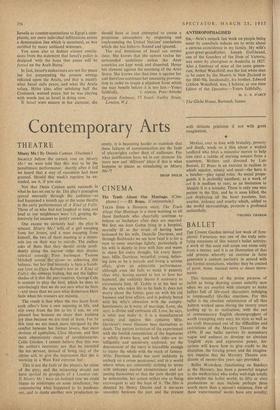THE Covent Garden revival last week of Sym- phonic Variations
was one of the truly satis- fying occasions of this winter's ballet activity; a work of this scale and scope can come only from a master, and it is an illustration of that odd process whereby an exercise in form generates a content perfectly in accord with the formal revelations, whether they be created of paint, stone, musical notes or dance move- ments. This of the prime purpose of T nhtsis.
ballet as being dancing comes suitably now when we are overfed with attempts to make ballets full of life-sized characters indulging in (supposedly) life-like emotions. For this ballet is the absolute culmination of all that Ashton worked upon during the twenty years leading up to its realisation; with the rest of contemporary English choreographers of worth (excepting only one), his style as well as his craft blossomed out of the difficulties and restrictions of the Mercury Theatre of the 1930s. If our ballet survives its momentary vogue and endures to develop an absolute 'English' style and expressive power, his- torians will know how to give credit to the discipline, the forcing power and the imagina- tive impulse that the Mercury Theatre con- ditions of twenty-five years ago provided. indeed, most are remarkable for eschewing contact with the very difficulties and limita- tions that were the prime choreographic in- centives, two decades ago, of Ashton, Tudor, Howard, Staff and Gore. No talent at present on view is going to create a few years hence anything even remotely resembling the two dozen ballets produced by the above-men- tioned artists.
The March programme held two hopeful notions: FanelliIla del Coralli, by Donato Fortes, had some simple and effective dancing illuminated by the very sensitive decor and costumes of Francis Thomas. And the revival of Michael Holmes's Palisades, with its obvious genesis in some thinking about totalitarianism, suggested that, at last, the contemporary world has broken into the consciousness of some contemporary choreo- graphers. The rest is silence.
A. V. COTON



































 Previous page
Previous page